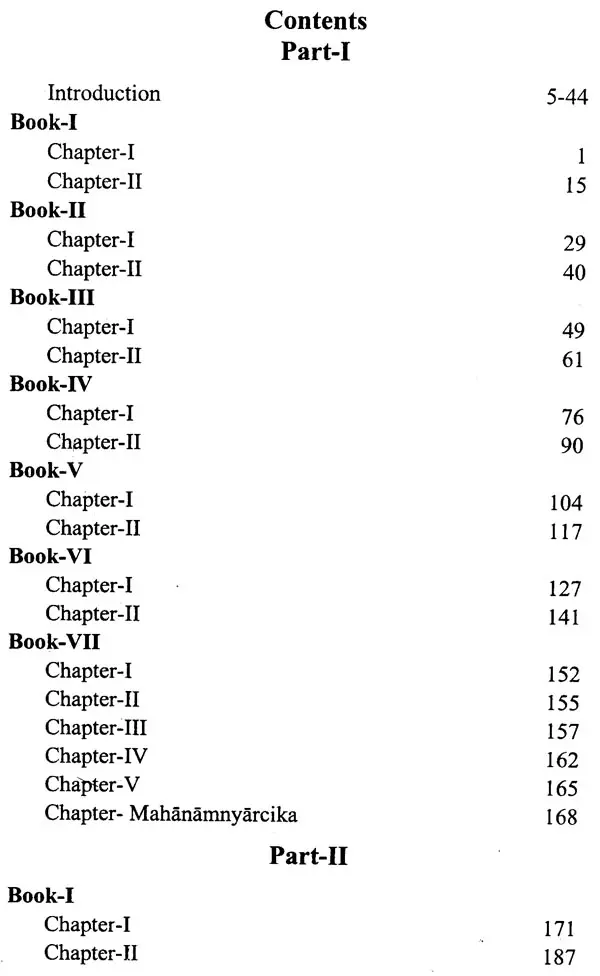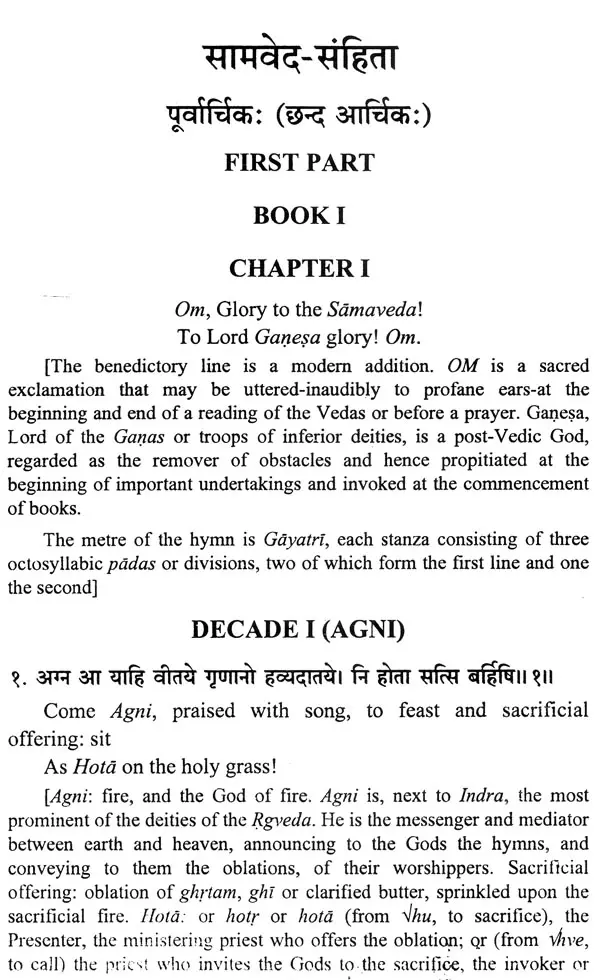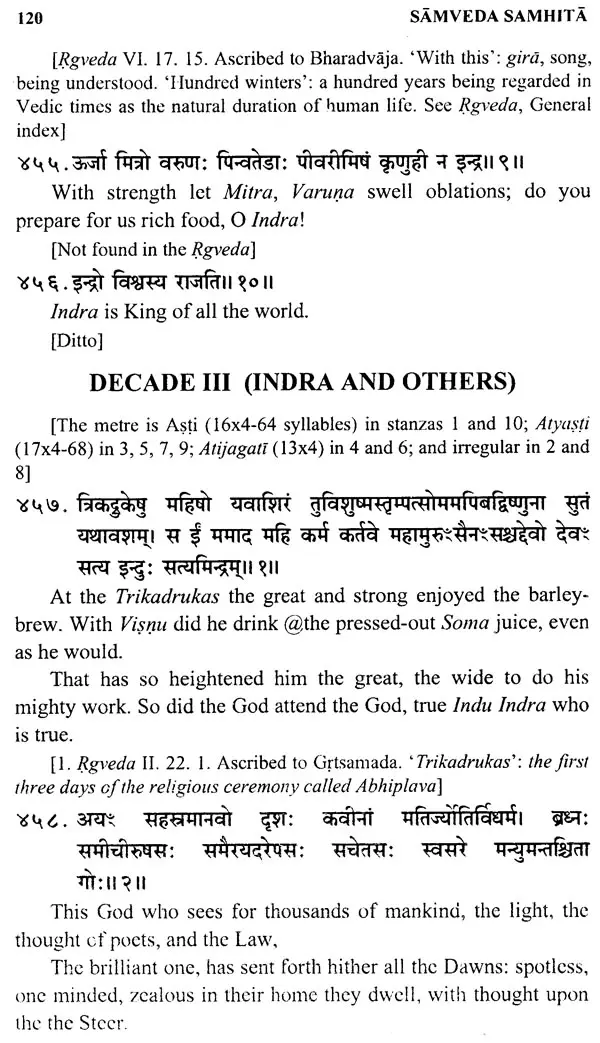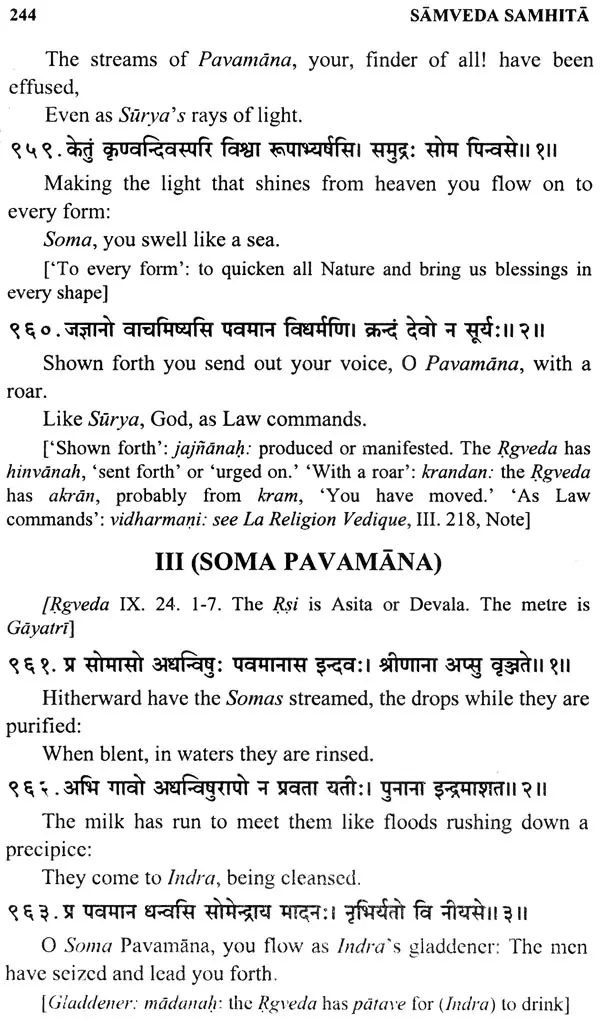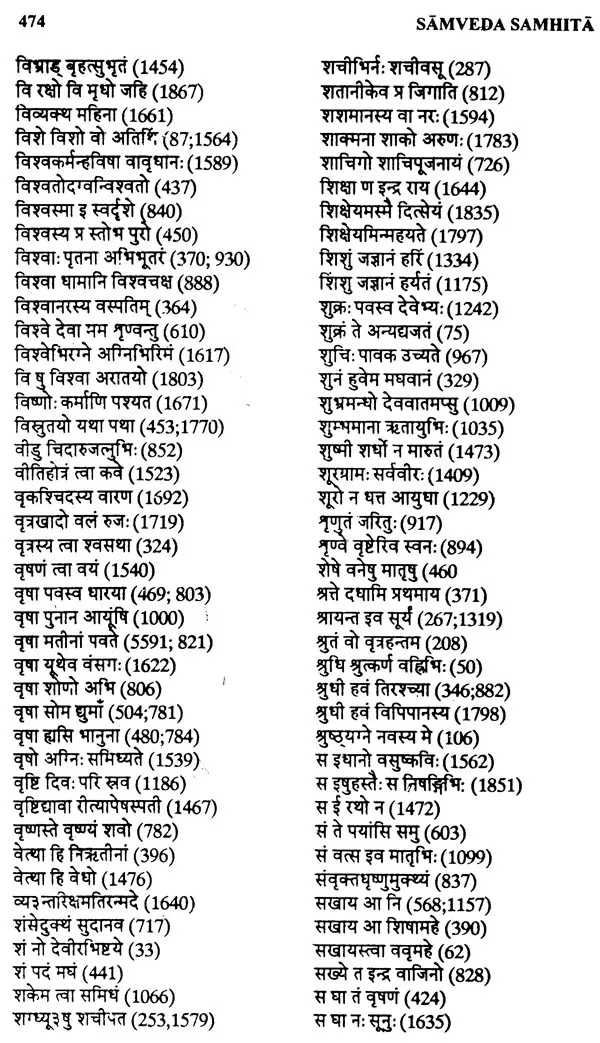
सामवेद - संहिता - Samveda Samhita (Sanskrit Text, English Translation, Notes & Index of Verses)
Book Specification
| Item Code: | UAC943 |
| Author: | R.T.H. Griffith and Ravi Prakash Arya |
| Publisher: | Parimal Publication Pvt. Ltd. |
| Language: | Sanskrit Text With Englsh Translation |
| Edition: | 2019 |
| ISBN: | 9788171101139 |
| Pages: | 476 |
| Cover: | HARDCOVER |
| Other Details | 9.00 X 6.00 inch |
| Weight | 700 gm |
Book Description
• Its old English usage has been supplanted with the corresponding usage of modern English and some Vedic terms have been retained in their true form.
• The method of transliteration of Sanskrit phonemes into Roman adopted by Griffith has fallen in disuse these days. Hence, it has been deemed proper to apply modern and revised method of transliteration in the present edition.
The most notable feature of this edition is that it contains the original mantras in Devanagari Script and complete index of the Sama verses for the ready reference of the scholars and readers.
Griffith's translation is not available on the mantra Aranyakakanda and Mahanamnyarcika consisting of mantras. , from Sr. No. 586 to 650. Also mantra No. 679 has not been translated by Griffith. Keeping in view the dearth of translation, the author of present lines has rendered his own scientific translation dealing with astronomical (adhidaivata) aspect. The readers will now find a full fledged Samaveda of Ramayana recension comparising of 1875 mantras.
The composition of Vedas could have been possible only after the human beings developed the language as the means of their 261 communication and defined it into the components of phonemes (vocalic and consonantal), and morphemes (i.e. root+suffix combinations).
We have reference in the Vedas themselves that prior to the compositions of Vedic hymns, the intellectual defined the crude form of language into the possible combination of root+suffix.
‘The scholars scarificed for standardization of language, which was spoken earlier in many forms of dialects by the then illiterates in the society.'
In fact Yajna was taken by the Vedic Scholiasts to mean operation. This Yajna I operation was carried out always to make improvement upon the earlier situation and so it was called as the noblest act.
Thus when the operation 'Standardization of language' was over, operation 'composition of hymns' was started. We have references to this type of operation from RV. 1.164.50; 10.90.16; AV. 7.5.1.; VS. 31.16; TS. 3.5.11 as follows
`The Scholars carried out the operation / yajna (chandas), i.e. composition of hymns by means of first operation i.e. by meaning, of standardized language.
Book's Contents and Sample Pages
